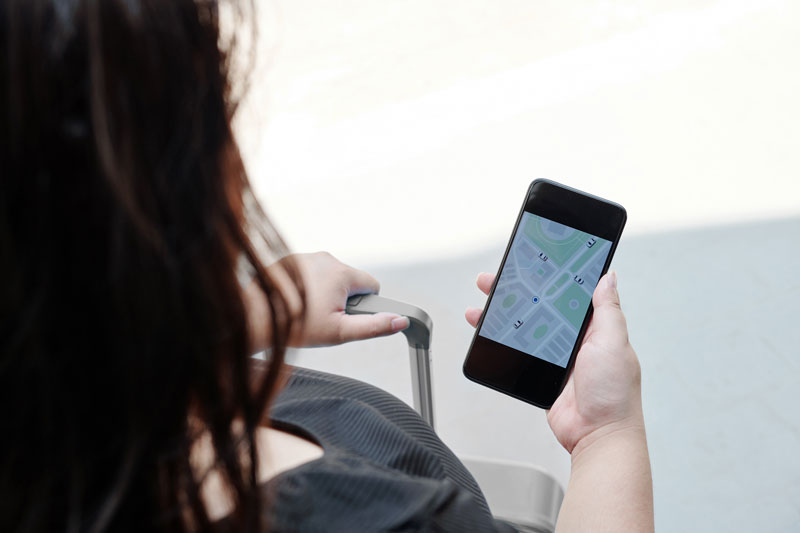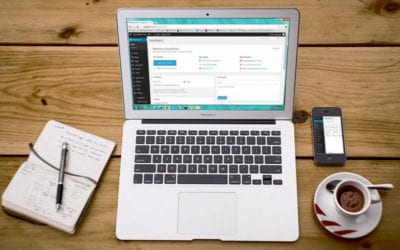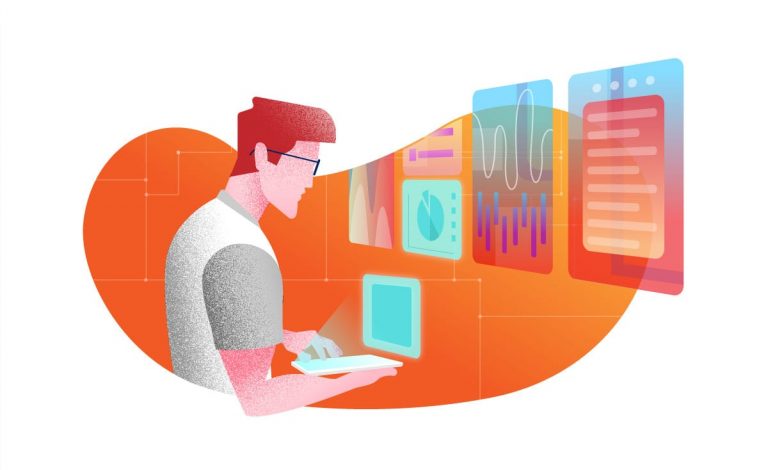How Much Does It Cost To Build An Uber (App Development Costs Explained)

So you’ve decided to build an app for your business. Great!
We know apps are so important in our day-to-day lives—in fact, the experts estimate that globally we spend roughly 4.2 hours every day using them. If you do the math, that’s a whopping 64 days per year.
You’ll likely have many questions at this point about what it takes to build an app, and more specifically, how much will it cost?
If you have a quick google, you’ll get results showing anywhere from $20k-$250k (or about R325k-R4mil). That’s a pretty wide price gap, isn’t it?
This is because mobile app development costs depend on a number of factors, and your choices for each will impact the cost.
Let’s take Uber as an example—an app that quite literally transformed the taxi industry. Today it’s one of the most successful apps of our time, with as many as 93m active users per month. The app itself is quite complex with various functionalities and is, therefore, a great example to help illustrate the key factors that will affect the cost of creating your app.
What Impacts the Cost of Building an App?
The best way to begin estimating the cost of your app is to determine whether it’s a simple, medium, or complex app.
As you would imagine, simple apps will be the quickest to create, while a more complicated app will take the longest, and require a higher investment. The table below summarises the sort of timeline to expect, and what the cost may look like.
| Features | Time Frame | Cost Estimate | Example | |
| Simple App | Basic features, 1 platform | ~3-5 months | ~$60k-$150k | Basic calculator app |
| Medium Complexity App | More features + more complex design, 1 platform | ~4-9 months | ~$150k-$300k | Coffee chain loyalty app |
| Complex App | Complex design, development, and support, 2+ platforms | 9+ months (ongoing) | $300k+ | Uber app |
But what exactly makes an app complex, and therefore need more time and money to develop? So now you have a rough estimate of the costs you can expect.
Well, it will depend on the following factors:
- Features and Functionality: What the app can do
- Platforms (iOS, Android): Which operating systems (OS) will it be built for
- Design: The look and feel of the app
- Region: Where will your app be developed
- Backend Infrastructure: What does the backend support structure look like
- App Admin: Does the app need an admin to manage users or payments
- Maintenance Costs: Bug fixing, new features, updates for new OS versions
With these in mind, it’s no surprise that the Uber app falls into the ‘complex app’ category with its multiple functionalities and high-quality design.
In the next sections, we will explain some of these key factors, taking a closer look at Uber to help demonstrate them.

Critical Features and Functions of Your App
This is all about what your app can do—in order to achieve your specific purpose.
For example, an app’s key purpose could be to offer additional content and support to users as a way to build the brand’s relationship with its customers.
A coffee shop rewards app like Vida e Caffè is a great example of this—it offers users the opportunity to collect loyalty points, send vouchers to friends, as well as the ability to pre-order their macchiato.
Such an app would need basic features like an account setup and login, as well as payment functionality.
Now when it comes to Uber, it gets a little more complicated.
Uber is actually made up of 3 different apps, intended to achieve different purposes: one for the passenger, one for the driver, and one for the admin running the master systems. Each of these apps requires different functionality in order to meet the needs of the specific user:
Functions for Passengers:
Registration & personal data management
- Payment capability
- Ride cost estimation
- Geolocation
- Routing & advanced route optimization
- SMS & push notifications integration
- Pre-booking functionality
Functions for Drivers:
- Personal profile management
- Geolocation
- Advanced route optimization
- Driver reports
- Call & SMS capability to contact passengers
- Heat maps
Functions for Admins:
- Login & admin profile
- Driver & passenger management (booking history, payment history, profiles)
- Fare rates management
- Dashboard
As you can see, each app in the Uber network requires its own functionality depending on the user, and this complexity is what adds to the cost of building it.
Think about the overall purpose of your app, and what key functions are needed in order to achieve it. You can expect that the greater the number of functions and features needed, the more costly and time-consuming development will be.
Will Your App Be Native to iOS or Android?
Another consideration is which platform you’d like your app to operate on—Android or iOS.
Apps that are built specifically for a certain type of operating system are called ‘native apps’. By design, these apps can only work on that operating system, and cannot be used on another platform that they weren’t designed for. The benefit of native apps is that they offer the best experience to their users, as it’s built with that specific OS in mind.
This means that you can achieve seamless compatibility with that system’s existing features including the camera, notifications, etc. Just think about how different the Apple iPhone functions compared to a Samsung Galaxy, and you’ll get the idea.
Developing an app for a single OS can be a good idea if you:
- Are after a specific audience that favors a particular OS
- Have a short timeline or budget
- Want to minimize risk by testing first, launching on the other platform later once the first version has become established
Bear in mind, if you choose to build your app for just one operating system, you will be limiting your user base to that OS.
This may be the best route if, for example, your app is specifically for Android users, or if those users are generally more aligned to your target population.
However, if you are trying to build a unicorn-like Uber, you would want to reach as many users as possible, and therefore should build an app for each OS. In reality, Uber has 5 or 6 apps to account for the various driver, user, and admin operating systems!
You’ll need to take this into consideration when estimating the cost of building your app, budgeting for the route that best suits your overarching targets.

Estimating Design Costs
Another important factor that will have an impact on cost is the design of your app.
Design is divided into two key parts:
- User Interface (UI): The ‘look’—essentially all of the visual elements of the app including icons, colors, fonts, etc.
- User Experience (UX): The ‘feel’—the experience the user has when they engage with the app
The design of your app can be created using an existing template, or it can be custom-built. While using a template is the cheaper route, custom designs offer key advantages as they are built specifically with your brand and users in mind.
Creating an engaging and intuitive app is crucial and has been one of the key pillars of success for Uber. Upfront costs may be higher, but you’ll see a higher ROI with a custom design as your users will have a much more engaging, personalized experience.
Designer & Developer Team Wages Vary by Region
It’s no surprise that where your app is developed will impact the cost.
Designer and developer fees will be more expensive in countries like the US (the homeland of Uber) where labor costs are generally higher, while India and Indonesia offer cheaper hourly rates.
Below is a rough guide on the development rates costs you can expect by region:
| Region | iOS ($/hour) | Android ($/hour) |
| North America | 150 | 150 |
| Australia | 92 | 92 |
| UK | 71 | 71 |
| South America | 43 | 37 |
| Eastern Europe | 40 | 40 |
| Indonesia | 35 | 35 |
| India | 25 | 26 |
Now, this doesn’t mean you should be jetting off somewhere to get your app developed at the cheapest rate.
While it may initially appear to be a low-cost option, what you may find is that quality is sacrificed. Sometimes when corners are cut to get a basic product together, it can end up looking and feeling as cheap as it costs—which believe us, is not worth the hassle.
You might be thinking, where does South Africa fall on this scale?
Well, we actually have some great developers in SA.
South Africa is a great option for software development, offering both quality and affordability. It’s often overlooked when it comes to app design, but in fact, some of the greatest tech companies were built by South Africans—ever heard of PayPal or Tesla?
So if you are looking to develop a complex app like Uber, you’ll need to weigh up the desired quality of your app with the costs and choose a region that best suits your needs. But this doesn’t necessarily mean outsourcing overseas, as you do have some great local options at your fingertips.
Conclusion
Let’s face it—there’s a lot to consider when trying to explain the cost of building an app.
Probably the easiest way to think about it is to break your app idea down into 3 overarching elements:
- Functionality
- Design
- Support Systems
These 3 components will help you determine whether you are looking at a simple, medium, or complex app, and from there you will be able to understand the costs you will be facing.
As a first step, we always recommend project scoping. This involves working together with a software company to build a detailed plan that covers every aspect of your idea, also known as the ‘blueprint’.
This is a low-cost, dip-your-toe-in-the-water approach that will give you a far better understanding ahead of any large investments made towards your app.
At Co-Foundry, this is a crucial step in any development project we undertake. Get in touch with us to see how we can help you build your Uber today.

Want Help With Your Software Project?
Get Our Free Ebook: How to Build Winning Custom Software – A Guide For Businesses and Entrepreneurs
By subscribing, you agree to get emails from Co-Foundry. We’ll respect your privacy and you can unsubscribe at any time.






